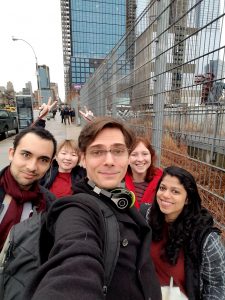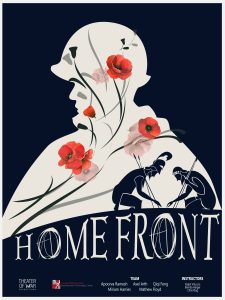Home Front: Week Six
The Work This Week:
Week six was spent building our foundation. It was also an excellent demonstration of how many ways there are to develop design.
One facet we we explored in depth was consulting with our Subject Matter Experts. Our bi-weekly call with Ms. Goldsmith was incredibly informative towards how best to approach the use of the chorus in our design, and helped us to solidify the demographics we want to aim our game towards. We also spoke with Dave Culyba, a faculty member at the ETC, on how best to approach the design parameters of a transformative experience. On Thursday, we had another call with Jessica Hammer, and talked about currently existing games in the space surrounding end of life conversations that we hope to develop in.
Another area we made progress on was constructing the components of the game. Using selected initial text from Philoctetes, we record place-holder audio to hand over to one of our programmers, Apoorva. She was able to implement the audio files on a skeleton of our app, to make sure we can iterate on functionality as we move forward.
We also were able to playtest our initial player interactions. Getting the game into the hands of players was eye opening, to say the least. It is clear that, to develop a game based around player communication, playtesting will be a key to our success.
Armed with this new information, we’re prepared to go into week seven. We’ll be working towards a better understanding of the mechanics we’ll be using. From there, we’ll be working to have a full first draft of our game by March 8th.


